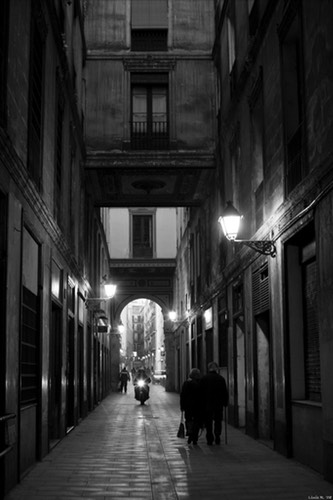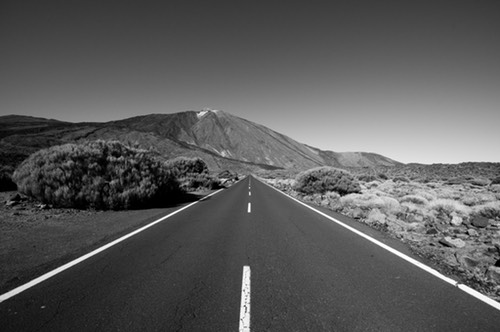A photograph is a representation of something in a two-dimensional medium, and one of the most typical ways of increasing interest and reality in a photo is by giving it depth through perspective. It’s the great ally of composition because by giving a sense of depth, we can draw closer to reality. This allows us to immerse ourselves in the photo, to get caught up in it.
Perspective was introduced in painting in the 15th century by Florentine painters such as Masaccio and Paolo Uccello, and was later studied in Leonardo Da Vinci’s “A Treatise on Painting”.
Perspective appears in the great majority of photographs, but the photographer will have to know it well to get the most out of it.
We can distinguish between two important types of perspective in photography.
Linear Perspective
This perspective makes the lines converge into one, two or three vanishing points. The more exaggerated the convergence, the more depth we will have, and we will attract attention and curiosity; however, too much will result in an artificial-looking photo.
The most common way of controlling perspective is by using the right lens. A wide-angle lens on our camera, which has a wider angle of view of the scene, will create a greater effect of perspective than a telephoto or zoom lens, where the perspective can eventually disappear.
But it’s not just the choice of lens which allows us to play with perspective. The angle also helps. Low- and high-angle shots can amplify the perspective of a photo, just as an eye-level and bird’s-eye viewpoint can cancel it out.
Finally, perspective will become more obvious the more straight lines there are in the frame; consequently, it occurs more in man-made places, since straight lines are hard to find in nature.
Aerial Perspective
We achieve this perspective through the change in the tonality and definition of objects, depending on how far away they are from the camera. It’s very common in landscapes, as when for example we see various chains of mountains fading and losing definition as they get further away.
This kind of perspective can be amplified by meteorological effects. Such as when fog creates depth in a photograph where the distances aren’t very far between objects.
Example 1 Linear Perspective

"Passatge de La Pau", Barcelona (2008)
Un pasaje del Barrio Gótico de Barcelona, el Passatje de la Pau. Era al atardecer y las luces de las calles estaban ya encendidas. Viendo a lo lejos venir la motocicleta tomé varias instantáneas de la que me quedé con esta. En ella podemos observar la perspectiva lineal, como las lineas horizontales de las fachadas se dirigen hacia un punto imaginario y en el infinito de la calle.
Example 2 Linear Perspective

"Cap el Teide", Tenerife (2009)
Another example. The highway in Teide National Park. This is from my collection of photographs from the Canary Islands. Notice how an artificial element, this man-made highway, a space between two straight parallel boundaries, creates the effect of depth in the photo, very interesting due to the perspective. It suggests that it’s a long road to Teide.
Example 1 Aerial Perspective

"Or", La Santa (2009)
“Or” (“Gold”) is a photograph taken in the afternoon in La Santa, Lanzarote, when the surfers are taking advantage of the last few hours of daylight to dominate the waves. In this instance, the spray from the waves along the coast strengthens the aerial perspective, which is very apparent with the mountains, making them lose sharpness and bringing depth to the photo.
Example 2 Aerial Perspective

"Sagrada Familia", Barcelona (2008)
This photograph, taken from the entrance to the Hospital of Sant Pau in Barcelona, is an example of aerial perspective applied in the city. The haze helps to create depth, and in the foreground we can see a couple, highly contrasted. A middle ground, further away, is formed by the buildings on the street, and in the background is the Sagrada Familia, a greyish color, hardly in focus, as if it were a shadow.
